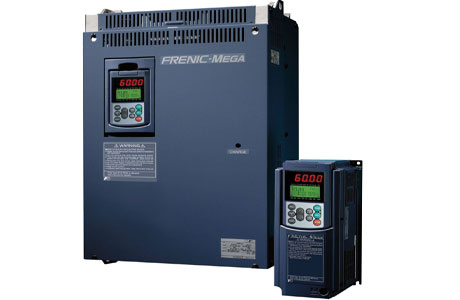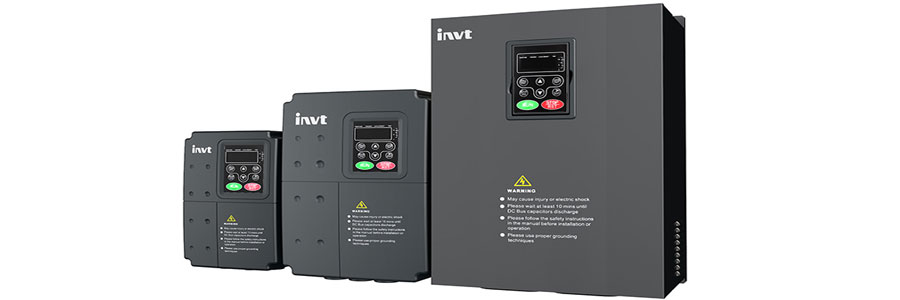Applications of VFD
In the world of motors and drives, one technological marvel has revolutionized the landscape: the Variable Frequency Drive (VFD). By controlling the frequency and voltage supplied to an electric motor, VFDs can fine-tune the motor’s speed and torque, offering unparalleled efficiency and precision. But where exactly are these versatile devices applied?
In this blog post, we’ll explore the vfd uses and the diverse applications of VFDs across various industries – from HVAC systems to manufacturing, and from water management to mining. We’ll also delve into the fundamental mechanics behind these powerful devices. Whether you’re a seasoned engineer or a curious novice, this blog promises to be a revealing journey into the world of VFDs. Let’s get started.
VFD Uses
The Core Mechanism of VFD
How does a VFD work? It receives AC input, converts it to DC, and finally changes it back to a variable frequency and voltage AC signal. This output can be adjusted to meet the desired motor speed. Can VFD change output voltage? Yes, it can, and that’s how it manages the speed of motors.
A VFD essentially controls the speed and torque of an electric motor by varying the input frequency and voltage, which is directly vfd uses related. It manages this through a three-step process: rectification, intermediate DC link, and inversion.
In the first step, the VFD takes in AC power and through rectification, converts it into DC power. This is achieved using a diode bridge which allows current to flow in only one direction.
The second step involves an intermediate DC link, which smooths out the rectified power signal using capacitors. This creates a stable, continuous DC voltage.
In the final step, this DC power is converted back into AC power using an inverter. The inverter uses power switches that are opened and closed rapidly to create an AC waveform. The frequency of this waveform, which dictates the speed of the motor, can be varied allowing precise control of motor speed and torque.
Remember, each applications of VFD may require different settings. Given the diverse vfd uses, understanding the core mechanism helps in the effective operation and basic VFD construction. The applications of vfds in different industries are vast, making VFDs vital components in modern industrial settings, transforming power usage and efficiency.
Where Do We Use VFD
Impacts of VFDs on Water/Wastewater Management
In water and wastewater management, VFDs come into play by controlling the speed of pumps. With their precise control, AC Variable Frequency Drives allow for optimal water flow, preventing wastage and reducing energy consumption. This control also reduces the strain on pipes, reducing pipe leaks and maintenance needs. The outcome is a more efficient and cost-effective water management system.
Transformation of the Mining and Minerals Industry with VFD
In the mining and minerals industry, VFDs have transformative impacts. Many processes in these industries, like grinding and crushing, require precise motor speed control. By controlling the motor speed, VFDs make these processes more efficient and less energy-intensive. The result is safer, more productive mining operations.
Application of VFD in Industries
VFDs, or Variable Frequency Drives, are indeed silent revolutionizers in various sectors. Their application in industries, from manufacturing to energy, has been transformative.
Through the application of VFD in industries, machinery operates efficiently. Use of VFD in motors precisely controls speed, conserving energy and extending machine life. They stand out as pivotal tools today, enhancing machine performance.
Realizing Energy Efficiency with VFD
The most pronounced benefit of using VFDs is their contribution to energy efficiency. By allowing operators to control the speed of electric motors, VFDs reduce power consumption significantly. They enable motors to operate only at the required speed, instead of running at full speed continuously.
This means less energy is wasted, making the entire operation more sustainable. Remember, a small reduction in speed can lead to a significant decrease in energy consumption, positively impacting your bottom line and the environment.
Extending Equipment Lifespan: VFD’s Unsung Benefit
Another significant benefit of VFDs, besides what are the applications of VFD in industry, is the extended lifespan they provide to equipment. Traditional motor starters can induce a high inrush current, leading to wear and tear over time, shortening the equipment’s life. VFDs, contrastingly, offer a “soft start”, progressively increasing the motor to its operational speed. This smooth acceleration reduces stress on the motor and connected devices, vastly prolonging their service life.
Furthermore, VFDs adeptly minimize startup current by managing power frequency. They initiate with a high frequency, diminishing the current delivered to the motor. This approach reduces both electrical consumption and motor wear. At full speed, VFDs adjust power for load changes, ensuring maximum efficiency.
This benefit, in turn, leads to reduced maintenance costs and less downtime, enhancing overall productivity and efficiency. This is one of the many benefits of the right VFD connection.
Conclusion
The applications of VFD in industries has revolutionized machinery operation across various sectors. From water management to mining, the vfd uses are vast, offering precise control, energy efficiency, and extended equipment life. Their impact optimizes motor speeds and conserves energy in modern industries. As industries progress, VFDs’ importance for efficiency and innovation increases.



